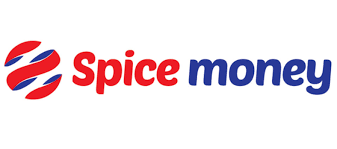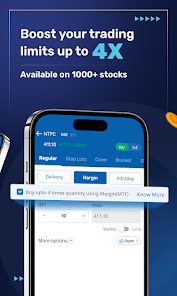Applying for an online loan might seem simple, especially with the convenience of an instant loan app or a loan app online. However, many borrowers are unaware of certain factors that can significantly impact their eligibility. Understanding these hidden elements can help you prepare better and improve your chances of approval.
Online loans provide a fast and convenient alternative to traditional banking methods, enabling users to borrow money with minimal paperwork and quicker processing. Despite this, lenders evaluate multiple criteria before approving a loan, and some of these are not immediately obvious to applicants.

Understanding Online Loan Eligibility
Loan eligibility is determined by a combination of personal, financial, and credit-related factors. Unlike traditional loans, online loans often rely heavily on automated systems that assess your profile in a few minutes. This is where instant loan apps or a loan app online come in handy, allowing you to apply and receive approval notifications almost instantly.
However, even with fast processing, not every application is approved. Lenders consider hidden factors that may not be visible on your surface-level financial profile but can significantly affect your borrowing potential.
Credit Score and Its Subtle Impact
Your credit score is one of the most important elements in determining your loan eligibility. While most people understand that a higher score increases approval chances, not everyone realizes that minor inconsistencies in credit reports can lead to rejections.
A slightly outdated credit history, unpaid small dues, or a sudden spike in credit utilization can reduce the likelihood of approval on an instant loan app. Similarly, multiple loan applications within a short period can also signal risk to the system, affecting decisions on a loan app online. Maintaining a steady, positive credit behavior is key to overcoming these hidden barriers.
Income Verification Challenges
Income is another crucial factor often underestimated by borrowers. Online lenders require proof of stable income to ensure repayment capability. Many instant loan apps request digital verification documents, and errors in uploading or mismatched information can cause delays or rejections.
Even if your income appears sufficient, inconsistent records or frequent job changes might raise concerns for lenders. Ensuring your documentation is up-to-date, accurate, and verifiable can significantly enhance your eligibility chances on a loan app online.
Hidden Debt and Financial Obligations
While you may be aware of your visible debts, lenders also consider your overall financial obligations. Subtle factors like recurring bills, hidden loans, or credit card liabilities can influence your eligibility.
Instant loan apps and loan app online platforms use automated systems that calculate debt-to-income ratios and assess risk. Even minor hidden financial commitments can affect these calculations. Borrowers should maintain a balanced financial profile and reduce unnecessary liabilities to increase approval likelihood.
Employment Type and Stability
Lenders prefer borrowers with stable employment. Full-time employees often have higher approval chances compared to freelancers or contract-based workers. The perceived risk with irregular income streams can impact online loan eligibility.
Even if you use an instant loan app, the algorithm considers the consistency of your income, employment history, and professional background. Ensuring stability and providing supporting employment documents can help improve your eligibility on a loan app online.
Recent Financial Behavior
Lenders pay close attention to your recent financial activities. Frequent large withdrawals, sudden loan closures, or high credit card utilization may signal financial instability.
An instant loan app analyzes patterns in recent financial behavior to gauge repayment capability. Being mindful of recent transactions and maintaining responsible spending habits can positively influence approval chances on a loan app online.
Personal Information Accuracy
Many borrowers underestimate the importance of accurate personal details. Minor errors in your identification documents, mismatched phone numbers, or incomplete residential proofs can delay loan approval.
Online systems cross-check information rigorously, and any discrepancies may result in rejection. Double-checking the accuracy of your submitted details ensures a smoother application process on an instant loan app or loan app online.
Technology and Platform Factors
Online loans rely heavily on digital platforms, and technical factors can indirectly impact eligibility. System errors, app version mismatches, or connectivity issues can lead to unsuccessful applications. While these factors do not reflect your financial capability, they can affect immediate approval decisions.
Ensuring you use a secure and updated instant loan app or loan app online platform can prevent technical disruptions and improve your overall application experience.
Tips to Improve Online Loan Eligibility
- Maintain a good credit score by clearing dues and avoiding excessive credit inquiries.
- Keep income and employment records accurate and updated.
- Reduce outstanding debts and manage recurring financial obligations.
- Ensure personal documents are correct and complete.
- Monitor recent financial behavior and maintain stability.
- Use reliable and updated loan apps for smooth processing.
By following these steps, you not only enhance your chances of approval but also create a positive digital borrowing footprint that lenders recognize.
Conclusion
Online loans are a convenient solution for short-term financial needs, but eligibility depends on several hidden factors. From credit score subtleties to income verification, recent financial behavior, and document accuracy, many elements determine whether your application is approved.
Using an instant loan app or a loan app online can simplify the borrowing process, but awareness of these hidden factors is crucial for successful loan approval. By maintaining a balanced financial profile, keeping records accurate, and managing your debts wisely, you can significantly improve your chances of obtaining an online loan without unnecessary delays.









